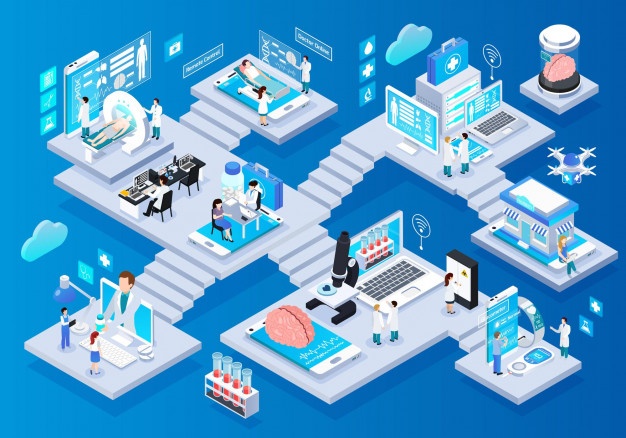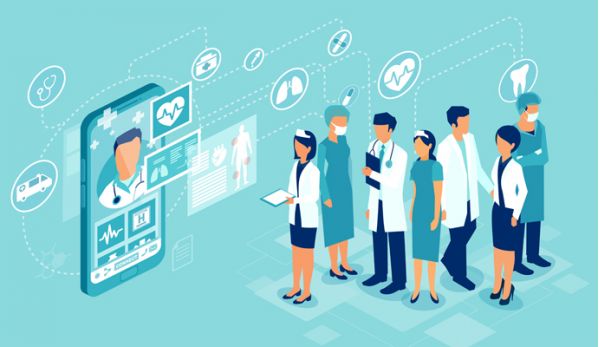Advances in health care have come a long way from being simple innovations in the medical space to becoming daily realities. Technology directly impacts the experience of the patients and their caregivers, especially when they are interacting with the doctors, nurses and health care staff.
With the industry moving towards a patient-first approach, technology has the potential to boost hospital experiences. Any hospital or medical clinic that fails to hop onto the tech bandwagon can result in these health care businesses missing out on a goldmine of possibilities.
The lack of a digital process may also deter patients who prefer health care facilities equipped with the latest technology. A 2019 survey revealed that 20 percent of patients dropped their current health care facilities due to poor digital experiences.
The good news is that incorporating technology in the hospital workflow need not be a difficult task. Here are some ways technology can be leveraged to improve your patient’s overall hospital experience:

Image by Freepik.com
Eliminating Negative Waiting Room Experiences
Longer waiting times contribute to low patient satisfaction scores. These are often the culprits behind the negative hospital reviews, as well. If a patient has to wait for hours before a doctor sees them, they’re starting their hospital journey on a sour note even before they get treated.
Apart from negatively impacting the overall hospital experience, a longer wait time affects a patient’s level of confidence in the hospital, as well as their perception of the facility’s quality of care.
Address waiting room woes by incorporating technology to optimize the hospital’s current workflow. Instead of manually scheduling patients, automate the appointment scheduling so the patients can book their appointments according to their schedules. Once a patient selects a time and date that is convenient for them, the physicians can either approve the appointment or ask the patient to reschedule.
Pre-defined timeslots lead to effective scheduling and reduced waiting times. The less time a patient spends in the waiting room, the more satisfied they would be with their hospital experience.
Remote Patient Monitoring and Wearable Technology
Health care wearables help boost patient engagement in both in-patient and at-home care services. Wearable technology provides doctors and nurses a comprehensive overview of their patient’s vitals: respiration, temperature, pulse, heart rate and blood pressure.
Instead of depending on manually input records of vitals once or twice a day, wearable technology automatically logs the patient data, which aids physicians in data-driven decision making.
Also, remote patient monitoring provides patients with quality care from the comfort of their homes while providing physicians the ability to monitor their patients remotely.
These health care technologies also help patients have more control over their health care. They can track the status of their healthy by logging into the connected app. This keeps patients updated on their health status, which keeps them motivated and engaged.
Mobile Apps To Boost Patient Engagement
Nowadays, there’s an app for almost anything, including health care. Mobile health applications offer an effective way to improve the hospital experience by boosting the engagement levels with patients. From mobile patient portals to medication reminder apps, these apps give patients an overview of the treatment being administered to the patients.
Mobile apps provide patients with automated reminders to refill their prescriptions, which gives patients an overview of their treatment in the palm of their hand. They can also get an automated reminder to refill their prescriptions.
Health Analytics for Better Clinical Decision Making
Hospitals work with complex systems; any delay in the process results in efficient processes, which can compromise the patient’s experience with the hospital. Using the power of data through predictive analytics can reduce the likelihood of delays, as well as aid in clinical decision-making.
The use of machine learning, artificial intelligence and big data analytics to create an informed clinical decision improves the accuracy of medical diagnosis.
Telemedicine to Support In-Person Visits
Technology is opening more channels of communication between patients and physicians. Instead of reminding patients for their follow-up hospital visits, patients and physicians can consult virtually anywhere.
Telemedicine also enables patients to choose the type of interaction they prefer. Patients can consult with their doctors via audio calls, video calls or secure text messaging. If they need to ask their doctors about their prescription refills or health questions like substitutes for rice, for example, all they have to do is reach out via telemedicine.
When patients have more control over the frequency and venue of communication leads to more positive experiences for patients, which can boost the health outcome.
The Bottom Line
Patient satisfaction is an important metric that hospitals and health care facilities should always consider. A patient’s hospital experience, their interactions with their physician and the hospital staff and the treatment they receive play a role in determining their satisfaction.
As the health care industry continues to thrive with tech-driven innovation, using technology to your advantage is the secret behind the success of your hospital.

Be the first to comment on "Technology Improves Patient Experience: What You Need to Know"